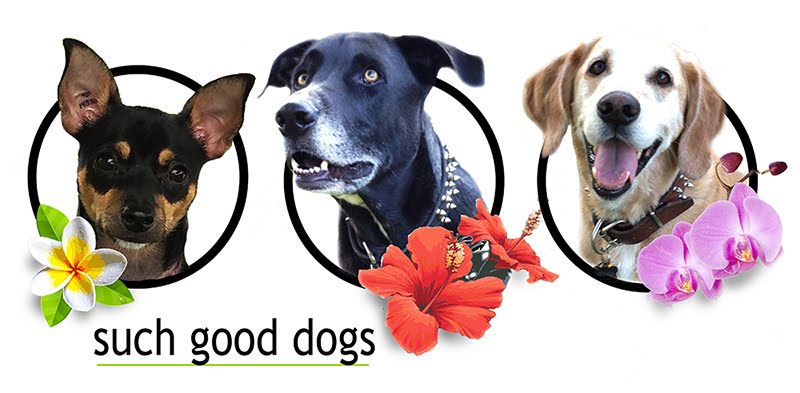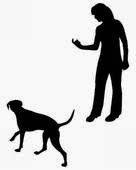The Heel position is about the dog staying close to the handler and paying close attention. We will start with the Basic Heel position, the Stationary Heel.
To do this, we will food lure the dog into the Heel position at our left side. Use your left hand to food lure the dog into the position. If you need, take a step back with your left leg to encourage the dog to move. Once the dog is in the Heel position, practice a Sit and Look.
- Food lure the dog several times while backing up.
- Food lure the dog, now turn your body so the dog is now on the left side in Heel position (use the treat in your left hand).
—Always begin and end every Heel exercise with a Sit in the Heel position.
—When you stop moving forward, move your baited hand UP slightly to initiate the Sit position.
—As you are moving forward, the treat should be held up slightly from the dog so she is looking for it. Gradually progress to moving your hand all the way up to the Look position.
(Puppy Ping Pong and Hide & Seek Games)
The Rules:
- Safety first. Always have a leash or be in an enclosed area.
- When you say come, you have to see it happen.
- NEVER punish a dog for coming to you.
The Steps:
- Say the dog’s name and Come, one time only.
- Have a party.
- Lure (or gently lead) the dog back to you.
Remember, each cue/command has three parts to build up or work on:
- Duration (Time)
- Distance
- Distractions
To improve the Cue: we will apply a Reward Grading Scale.
This means that you must know what your dog likes best. For this scale, we will reward with a low level treat for an okay recall. As the dog improves on speed and direction, the training grade is higher, and therefore the reward should be greater. Once the dog runs the distance quickly and directly to you, use a Jackpot Reward. This means giving the dog several treats quickly after performing a behavior exceptionally well.
Practice Come when Called while adding Distance.
We will start at a distance where we know the dog will currently respond to Come, then slowly start adding distance each time. If the dog does not do well, take the training back a step (move closer to the dog). Remember to progress slowly. Be sure to attach your long line dog leash for this training. For this, it is helpful to have two people for each dog. This will make this exercise much easier to practice. (Puppy Ping Pong Game). Remember to practice all 3 Steps of Come When Called each time (as needed).
Come when Called while adding Distractions.
Next we will try adding distractions to Come when Called. To begin, we will start at a lower distance then was just practiced. Keep your long ling training leash attached. Now we will practice Come when Called while adding distractions. For this we will use other dogs and people from class, as well as objects to try and distract your dog during the Come command. Be sure to take this training very slowly. Heavily reward your dog for ignoring the distraction(s) and coming to you. Slowly add more difficult distractions. Remember to use your Reward Grading Scale. For better recalls, reward more lavishly with better treats.
Practice Look, Sit, Down, & Stand:
Finally we will practice some Basic Manners. Practice each cue and make the dog hold the position longer before the reward. Be sure to say your Reward Marker, “Good,” the instant the dog performs the behavior, but withhold the treat for a few seconds. Make the dog wait longer and longer for the reward. When rewarding, praise lavishly.
For Week 3 class we will be adding Distance and Distractions to the Stay cue. So for this week, practice the Stay cue without distance and distractions. Simply work on building up Duration, or time.





















